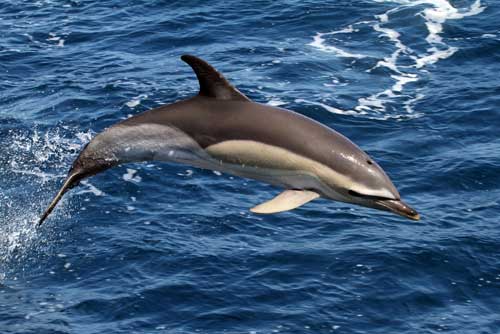Stenella coeruleoalba
Nutrition
Since Striped Dolphins are found in many
diverse habitats around the world, their diet also tends to vary. The
Striped Dolphin is an opportunistic feeder- it will feed on whatever
prey is most readily available. The main components of its diet vary
depending on its habitat. They are carnivorous, and typically prey on
small organisms in the ocean (Encyclopedia of Life).
A young dolphin, or calf, begins its life with
its mother’s milk as the only source of nutrition. At about one year to
a year and half old the weaning process begins, and the calf begins to
prey on other small marine organisms with the adults (Ridgway 1972).
Adult dolphins typically eat a variety of smaller fish
that swim in large schools near the surface of the water (NOAA). In
order to catch this prey as efficiently as possible, Striped Dolphins
have developed many team strategies. One of these includes surrounding
and encircling a school of fish, then taking turns swimming through the
dense school.
This strategy is often called the
"horizontal carousel”
(Pryor 1991).
Striped Dolphins also often feed on small Mollusks,
Crustaceans, or Lanternfish (Animal Diversity Web). According to
the Convention of Migratory Species, many of the prey found in the
stomachs of Striped Dolphins off the coast of Japan were luminescent. 
These dolphins will also often make meals out of
cephalopods. Many times, they will prey on small squid or octopuses
(Reeves 2002). In fact, according to Ridgway et al. (1972), many Striped
Dolphins have been found with the imprints of squid suction cups on
their beaks as a result of this diet choice.
To continue, visit the Reproduction page or to start over with the Home page.